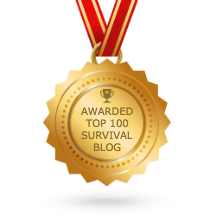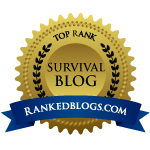A lot of us spend
lots of time and money making sure our food storage is ready and
available in case of an emergency, but how about our accessability to
clean, drinkable water? If a disaster occurred tomorrow and you were
without power to your house, how would you supply yourself with clean
water? Never assume that in an emergency situation, clean water will
be easy to find because it usually is not. Without electricity you
will not have any water pressure because the municipal pumps will not
be functioning so it is crucial that you learn to be self reliant.
The fact of the matter is that water is more important than even food
when it comes to survival. The human body can only survive for 3 days
without water. So what are the easiest and most popular ways to treat
unsanitary water, so that you don’t have to store hundreds of
gallons of clean water In your home?
The first and most
common way is to simply boil the water. Unsterilized water contains
many forms of bacteria and parasites which, if ingested, can
potentially lead to serious illnesses or death. For this reason it
is necessary to first make sure that you kill all of the harmful
pathogens in the water before drinking. Simply bring the water to a
boil (212°F / 100°C) and let it boil for a full minute. The time it
takes to bring the water to boiling and then cooling down afterwards
is more than enough time to insure that all the harmful bacteria is
destroyed.
The second most
popular way to clean unsanitary water is to add a small amount of
bleach to the water. The chlorine in the bleach will disinfect the
water and make it safe to drink. To start, take the water and make
sure it is clear of dirt and sediment by straining it through a
filter or cloth. Then take regular liquid bleach, containing NO soaps
or dyes, and add 8 drops (1/8th US teaspoon) per one
gallon of water. Mix it thoroughly and then let it sit for 30
minutes. After that, smell the water. If the water has a faint smell
of chlorine, it is OK to drink. If it does not have a chlorine smell,
start the process over.
As we all know,
emergency preparedness is a constant journey. Take it one step at a
time when you get overwhelmed, and never give up. Click
on this link for a social media site with more ideas for being
prepared.
Author Bio- Dirk
Puckett is an author and emergency preparedness educator who resides
in Springville, Utah. For more water
purification tips, click the link.





1 comments:
Hi. I followed your tweet to your site. Great post. I totally agree with your method. Keep the information coming! I'll visit again soon.
Post a Comment